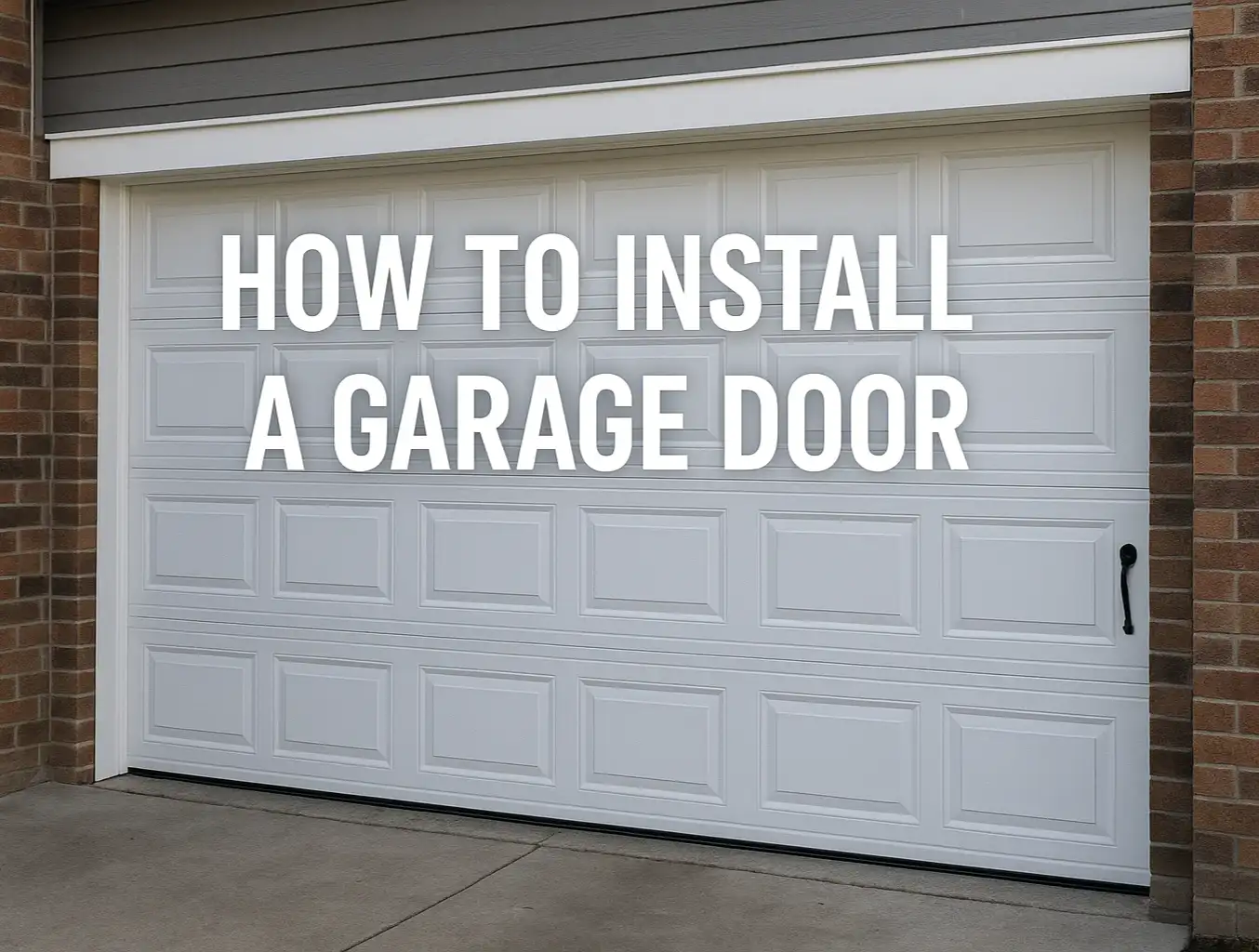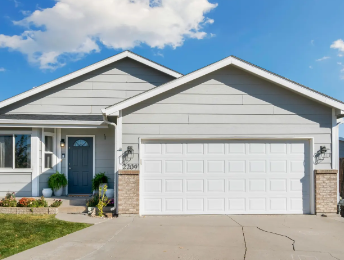How to Install a Roll-Up Garage Door: A Professional vs. DIY Breakdown
Published: Nov 11, 2025
Roll-up garage doors are an excellent, space-saving choice for both homes and businesses. If you’re handy, you might be looking up how to install a roll-up garage door to save on labor costs. While a DIY garage door installation can be tempting, this project is far more complex and dangerous than it may appear. This guide walks through the general steps involved and explains why trusting a professional garage door company like Up & Down Garage Doors is the safest and most reliable choice.
When a Roll-Up Garage Door Makes Sense
While most people associate roll-up doors with commercial spaces, they can be a smart option for residential use, too. Their compact design saves overhead space, and their durability makes them a great fit for detached garages, workshops, or storage buildings. If you’re comparing options, this guide on sectional vs. roll-up garage doors can help clarify which one suits your space best. For high-traffic or limited-clearance areas, a roll-up garage door is often the better long-term solution.
The Essential Steps for a Roll-Up Door Installation
A successful installation depends on precision from the very first step. While the process can be broken down, each stage requires careful attention to detail and specialized tools.

Step 1: Preparation, Tools, and Frame Verification
Before anything is unboxed, the site must be perfect. This involves:
- Verifying Dimensions: You must precisely measure the rough opening to ensure it matches your new door.
- Checking the Frame: The jambs (the vertical sides) must be perfectly plumb (vertical), and the floor and header must be level. An uneven frame will cause the door to bind, an issue that can’t be fixed after installation.
- Gathering Tools: This job requires more than a standard drill. You will need a level, wrenches, C-clamps, and, most importantly, specialized winding bars for the spring tension.
Step 2: Assembling and Mounting the Door
Following the roll-up door installation instructions is critical here. You will first attach the guides to the brackets. Then comes the most physically demanding part: lifting the entire coiled door assembly into position. This is a two-person job at minimum. The guides must be secured to the wall perfectly plumb and with the exact spacing required. Failure to do this correctly will cause the door to operate poorly and wear out quickly, especially for a heavy-duty commercial garage door.

The Most Critical Phase: Spring Tension and Safety

This is the single most dangerous part of any roll-up door installation. The door is counterbalanced by a high-tension spring coiled inside the barrel. To make the door liftable, you must apply an “initial tension” by rotating the barrel before the curtain is unrolled.
These springs store an enormous amount of energy. If a tool slips or the spring breaks, it can unwind violently, causing severe injury or even death. This step alone is the number one reason why DIY garage door installation is strongly discouraged for anyone not professionally trained.

Final Installation and Balancing Tests
Once the spring has its initial tension, you can carefully lower the door, install the head stops (which prevent it from rolling up too far), and attach any handles. The final test is for balance. A properly installed door should:
- Open and close smoothly without excess effort.
- Stay in place when you let it go halfway up.
If the door slams shut or is extremely difficult to open, the spring tension is wrong. This requires adjusting the tension with the winding bars, which is just as dangerous as setting the initial tension.
DIY vs. Professional: Understanding the Real Risks
The main appeal of a DIY project is saving money. However, the risks associated with this particular job are significant.
- Injury: As mentioned, the springs are incredibly dangerous.
- Property Damage: An improperly installed door can damage the door itself, the tracks, or even your building’s frame.
- Warranties: Many manufacturers may void the warranty if the door is not installed by a certified professional.
You can find many guides online on how to install a garage door, but they all carry strong warnings. An experienced garage door technician handles all the risk, brings the specialized tools, and guarantees the job is done safely and correctly the first time.
Trust Your Installation to Up & Down Garage Doors
A roll-up door installation is a precise, high-stakes job that is best left to experienced technicians. While understanding the process is valuable, the safe execution of these steps is what truly matters.
At Up & Down Garage Doors, our team has the training, experience, and specialized equipment to handle your installation perfectly. We ensure your new door is safely installed, properly balanced, and sealed correctly from day one. Instead of risking your weekend — and your safety — contact our team for a fast, reliable, and secure professional roll-up door installation.
Frequently Asked Questions About Roll-Up Door Installation
Are roll-up garage doors a good option for homes?
Yes. If you’re short on ceiling space or want a long-lasting solution, a roll-up garage door is great for residential garages, workshops, and sheds.
Do you offer commercial roll-up door installation?
Absolutely. We handle everything from small business bays to full-scale commercial roll-up door installation for warehouses and industrial sites.
Why is my new roll-up door hard to open?
This is almost always a sign of improper spring tension. This is dangerous to adjust, and you should call a professional to balance the door.
Can I install a roll-up garage door myself?
You can try, but DIY garage door installation is risky. The spring system stores a serious force, and improper handling can cause serious harm or property damage.
Will I void my warranty if I install it myself?
In many cases, yes. Manufacturers often require a certified installer to keep the warranty valid.
You may also like


